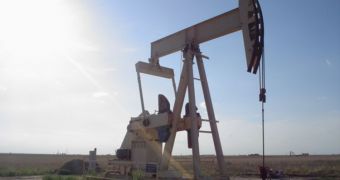Politicians in the United States can often be heard talking about how American dependency on foreign oil and gas is one of the nation's greatest weakness. In response to this situation, the US Geological Survey has just created the first estimates of the undiscovered, technically-recoverable onshore shale oil and gas deposits available in the North Slope of Alaska.
The paper provides an estimation of potential, not actual number that can be measured directly. By definition, quantifying the exact amount of useful product that lies in such deposits is very difficult.
Part of the reason why this happens is because shale oil is a so-called unconventional type of oil. It is produced through complex processes such as pyrolysis, hydrogenation, or thermal dissolution, from organic matter that lies within the shales.
The resulting compound is basically synthetic oil but, once refined, it can be used in roughly the same way, and for the same applications, as crude oil extracted from standard deposits. The “upgraded” version of the stuff can be produced in refineries.
In the new document, the USGS estimates that the Alaska North Slope – which has boundaries with the Chukchi Sea to the west, the Beaufort Sea to the east and the Arctic Ocean to the north – contains vast amounts of technically-recoverable shale oil and shale gas.
The report shows that up to 2 billion barrels (84 billion gallons) of oil could be extracted from the region, alongside up to 80 trillion cubic feet (2.265 trillion cubic meters) of gas. These quantities can be obtained with existing technologies and practices available to the industry.
However, the report does not take into account economic and accessibility issues, such as how easily the resources can be found and exploited, and how much it would cost to do so.
Alaska North Slope shales are notoriously difficult to exploit in this manner, mostly because of the huge costs associated with installing the necessary infrastructure. The good part about exploiting these locations is that they (mostly) don't overlap with the Arctic National Wildlife Refuge.
“Better knowledge of the untapped resource potential found in all areas of the country will help us better make science-based decisions about how we continue to grow domestic energy production for America,” Secretary of the Interior Ken Salazar explains.
“Alaska’s energy resources hold great promise and economic opportunity for the American people, and we will continue to expand our scientific understanding of existing resources as part of our commitment to an all-of-the-above energy approach that includes safe and responsible production of American oil and gas resources,” he adds.
“Providing scientifically sound, publicly available assessments of the quantity of new, untapped oil and gas resources in frontier areas is but the first step in weighing their potential contributions to energy supplies as well as the impacts of recovering them,” concludes USGS Director Marcia McNutt.

 14 DAY TRIAL //
14 DAY TRIAL //